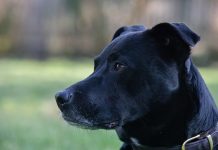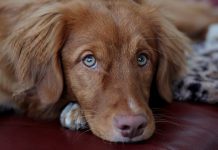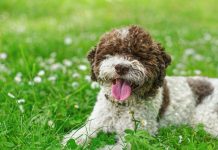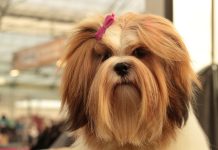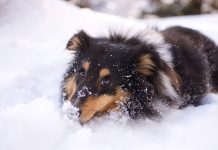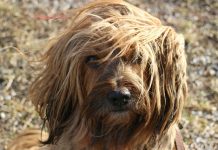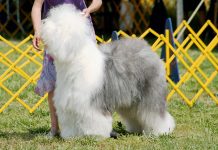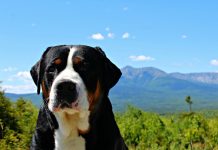History and Origins of the Newfoundland Breed
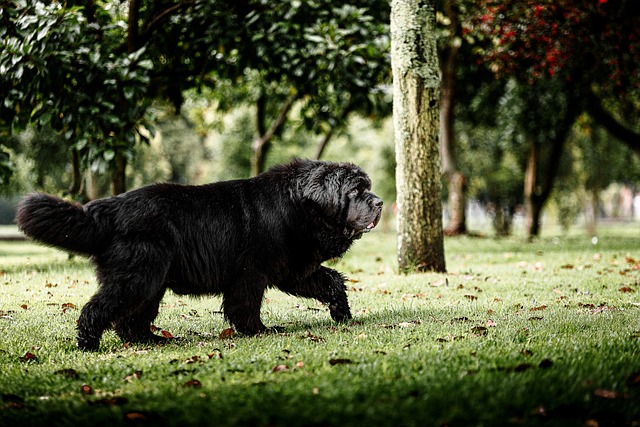
The Newfoundland breed, known for its gentle nature and water rescue abilities, has a fascinating history that traces back to the island of Newfoundland in Canada. Here’s an overview of the history and origins of Newfoundland dogs:
- Origins in Newfoundland: The Newfoundland breed originated in the 18th century on the island of Newfoundland, off the eastern coast of Canada. It is believed to be descended from a combination of indigenous Canadian dogs and European working dogs brought to the island by fishermen and explorers.
- Purpose as Working Dogs: Newfoundland dogs were initially bred as working dogs by fishermen and settlers in Newfoundland. They were valued for their strength, swimming ability, and willingness to work in water, making them invaluable companions for fishermen working in harsh and cold conditions.
- Water Rescue Abilities: Newfoundland dogs are renowned for their water rescue abilities. They have a natural instinct for swimming and are capable of rescuing drowning victims due to their strong swimming skills and webbed feet.
- Recognition as a Breed: The Newfoundland breed was officially recognized by the American Kennel Club (AKC) in 1879. Since then, Newfoundland dogs have gained popularity not only as working dogs but also as beloved family companions and show dogs.
Physical Characteristics and Appearance of Newfoundland Dogs
Newfoundland dogs are large, powerful, and noble-looking dogs with distinctive physical characteristics. Here are the key physical features and appearance of Newfoundland dogs:
- Size: Newfoundland dogs are one of the largest dog breeds, with males typically standing 28 inches (71 cm) to 30 inches (76 cm) tall at the shoulder and weighing 130 pounds (59 kg) to 150 pounds (68 kg). Females are slightly smaller, standing 26 inches (66 cm) to 28 inches (71 cm) tall and weighing 100 pounds (45 kg) to 120 pounds (54 kg).
- Build: Newfoundland dogs have a robust and muscular build, with a broad chest and strong, well-developed limbs. Despite their size, they are known for their gentle and sweet temperament.
- Coat: Newfoundland dogs have a dense, water-resistant double coat that consists of a soft, dense undercoat and a coarse, long outer coat. The coat can be black, brown, gray, or Landseer (white with black markings).
- Head and Face: Newfoundland dogs have a broad and slightly rounded head with a strong muzzle. They have expressive eyes that are dark brown and convey intelligence and kindness.
- Ears: Newfoundland dogs have medium-sized, triangular ears that hang close to the head.
- Tail: Their tail is strong and bushy, carried low when relaxed and slightly higher when alert.
- Webbed Feet: One of the most distinctive features of Newfoundland dogs is their webbed feet, which aid them in swimming efficiently.
- Gait: Newfoundland dogs have a smooth and powerful gait, with a ground-covering stride that reflects their strength and agility.
Newfoundland dogs are known for their sweet and gentle temperament, intelligence, and devotion to their families. They are excellent with children and make loving and loyal companions for active families. Regular exercise, grooming, and proper care are essential for keeping Newfoundland dogs healthy and happy.
Newfoundland Temperament and Personality Traits
- Gentle and Affectionate: Newfoundland dogs are known for their gentle and loving nature. They are highly affectionate and form strong bonds with their families, often seeking physical closeness and attention.
- Patient and Tolerant: Newfoundland dogs are patient and tolerant, especially with children. They are known to be excellent with kids and are often referred to as “gentle giants.”
- Protective Instincts: Despite their calm demeanor, Newfoundland dogs have a protective instinct towards their families. They are naturally watchful and will alert their owners to any potential threats.
- Intelligent and Trainable: Newfoundland dogs are intelligent and eager to please, making them relatively easy to train. They respond well to positive reinforcement techniques and thrive on praise and rewards.
- Calm and Even-Tempered: Newfoundland dogs have a laid-back and easygoing temperament. They are known for their stable and predictable behavior, which makes them great companions for families.
- Social and Friendly: Newfoundland dogs are typically friendly towards strangers and other animals when properly socialized. They enjoy meeting new people and are generally well-mannered in social settings.
- Water Enthusiasts: Newfoundland dogs have a natural affinity for water and are excellent swimmers. They enjoy activities such as swimming and water rescue, which reflect their strong swimming instincts.
- Adaptable: Despite their large size, Newfoundland dogs can adapt well to various living environments, including apartments, as long as they receive sufficient exercise and attention.
Training and Socialization Needs for Newfoundland Dogs
- Early Socialization: Start socializing your Newfoundland puppy early to expose them to different people, animals, and environments. This helps prevent shyness or fearfulness later on.
- Obedience Training: Newfoundland dogs benefit from basic obedience training to teach them essential commands such as sit, stay, come, and heel. Use positive reinforcement methods and avoid harsh corrections.
- Consistent Leadership: Newfoundland dogs respond well to confident and consistent leadership. Be patient and firm during training sessions, and establish yourself as the pack leader.
- Gentle Handling: Due to their sensitive nature, Newfoundland dogs respond best to gentle and positive handling. Avoid using harsh training methods that could undermine their trust and confidence.
- Exercise Requirements: Despite their calm demeanor, Newfoundland dogs require regular exercise to stay healthy and prevent obesity. Daily walks, swimming sessions, and interactive playtime are beneficial for their physical and mental well-being.
- Grooming Routine: Newfoundland dogs have a dense coat that requires regular grooming to prevent mats and tangles. Brush their coat several times a week and trim their nails and clean their ears as needed.
- Water Activities: Take advantage of your Newfoundland’s natural swimming abilities by providing opportunities for water-based activities. Supervise them during water play to ensure their safety.
- Positive Reinforcement: Use positive reinforcement techniques such as treats, praise, and play to motivate and reward desired behaviors. Newfoundland dogs thrive on positive interactions with their owners.
By providing proper training, socialization, and exercise, you can help your Newfoundland dog reach their full potential as a well-mannered and happy companion. They thrive on companionship and attention from their families, so be sure to include them in your daily activities and shower them with love and affection. With the right care and nurturing, Newfoundland dogs will reward you with unwavering loyalty and companionship for years to come.
Health Considerations and Common Issues in Newfoundland Dogs
- Orthopedic Issues:
- Hip Dysplasia: A common genetic condition where the hip joint doesn’t develop properly, leading to arthritis and mobility issues.
- Elbow Dysplasia: Similar to hip dysplasia, affecting the elbow joint and causing lameness and pain.
- Osteochondrosis Dissecans (OCD): Developmental joint disease that affects cartilage and bone growth, leading to joint pain and stiffness.
- Heart Conditions:
- Subvalvular Aortic Stenosis (SAS): A congenital heart defect affecting blood flow from the heart, which can lead to heart murmurs and heart failure.
- Dilated Cardiomyopathy (DCM): A condition where the heart muscle becomes thin and weak, reducing its ability to pump blood effectively.
- Gastrointestinal Issues:
- Gastric Dilatation-Volvulus (GDV) or Bloat: A life-threatening condition where the stomach twists and traps gas, leading to rapid onset of shock and organ damage.
- Pancreatitis: Inflammation of the pancreas, causing abdominal pain, vomiting, and diarrhea.
- Skin Problems:
- Hot Spots: Acute moist dermatitis caused by skin irritation or allergies.
- Cystinuria: A genetic condition that can lead to urinary stones.
- Respiratory Issues:
- Laryngeal Paralysis: Condition affecting the larynx muscles, causing breathing difficulties.
- Pulmonic Stenosis: Narrowing of the pulmonary artery, leading to heart-related respiratory issues.
- Obesity: Newfoundland dogs are prone to weight gain, which can exacerbate orthopedic issues and shorten lifespan.
Living with a Newfoundland: Suitable Environments and Lifestyle Considerations
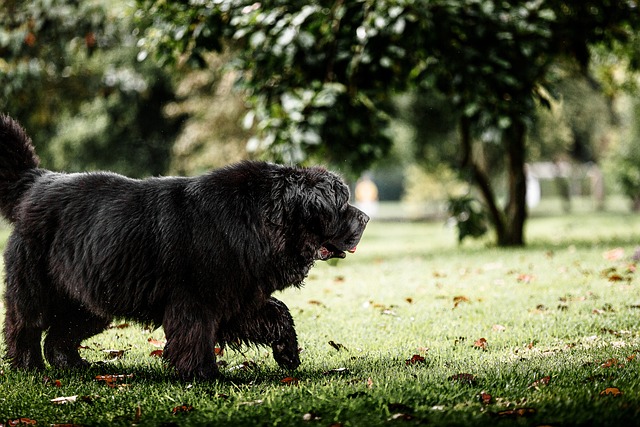
- Indoor Living: Newfoundland dogs can adapt well to indoor living, provided they have sufficient space and regular exercise. They enjoy being close to their families and should not be left alone outdoors for long periods.
- Exercise Requirements: Despite their size, Newfoundland dogs require moderate exercise to stay healthy and mentally stimulated. Daily walks, swimming, and interactive play sessions are recommended.
- Grooming: Newfoundland dogs have a dense, water-resistant double coat that requires regular grooming to prevent mats and tangles. Brush their coat several times a week and trim their nails and clean their ears as needed.
- Weight Management: Monitor your Newfoundland’s diet and avoid overfeeding to prevent obesity, which can exacerbate health issues.
- Temperature Sensitivity: Newfoundland dogs are sensitive to heat due to their thick coats. Provide them with shade, cool water, and avoid strenuous exercise during hot weather.
- Supervision Around Water: Newfoundland dogs are natural swimmers, but always supervise them around water to prevent accidents, especially in pools or open bodies of water.
- Regular Veterinary Care: Schedule regular veterinary check-ups, vaccinations, and preventive care to monitor your Newfoundland’s health and address any concerns promptly.
- Socialization and Training: Proper socialization and training are essential for Newfoundland dogs to develop good behavior and confidence. Expose them to different environments, people, and animals from a young age.
By providing a suitable living environment, regular exercise, proper grooming, and attentive veterinary care, you can help your Newfoundland dog live a healthy, happy, and fulfilling life. They thrive on companionship and attention from their families, so include them in your daily activities and cherish their gentle and loving nature. With the right care and commitment, Newfoundland dogs will be loyal and devoted companions for many years to come.
Newfoundland Variations and Breeding Practices
Newfoundland dogs are a relatively uniform breed in terms of appearance and characteristics, but there can be variations within the breed based on factors such as coat color and size. Responsible breeding practices are important for maintaining the health, temperament, and conformation of Newfoundland dogs. Here’s an overview of Newfoundland variations and common breeding practices associated with this breed:
Newfoundland Variations
- Coat Color:
- Black: The most common color for Newfoundland dogs, with a solid black coat.
- Brown: Also known as “liver” color, ranging from deep brown to lighter shades.
- Landseer: White coat with black markings, including a black head with a white blaze, black patches on the body, and sometimes a black tail.
- Size:
- Standard: The standard size for Newfoundland dogs, with males typically weighing 130-150 pounds (59-68 kg) and females weighing 100-120 pounds (45-54 kg).
- Giant: Some Newfoundland dogs may be larger than average, with males weighing over 150 pounds (68 kg) and females over 120 pounds (54 kg).
- Coat Texture:
- Double Coat: Newfoundland dogs have a dense, water-resistant double coat with a soft undercoat and a coarse outer coat. The coat can vary slightly in texture, but it should be dense and weather-resistant.
Breeding Practices
Responsible breeding practices are essential for preserving the health, temperament, and conformation of Newfoundland dogs. Here are some common breeding practices associated with this breed:
- Health Testing: Ethical breeders conduct health screenings for genetic conditions that may affect Newfoundland dogs, including hip dysplasia, elbow dysplasia, heart conditions, and cystinuria. They use these tests to select breeding pairs with good health and genetic diversity.
- Pedigree Analysis: Breeders study the pedigrees of potential breeding dogs to understand their lineage and genetic background. They aim to avoid inbreeding and select breeding pairs that complement each other in terms of health, temperament, and conformation.
- Conformation to Breed Standard: Newfoundland breeders strive to produce dogs that conform to the breed standard set by kennel clubs such as the American Kennel Club (AKC) or The Kennel Club (UK). This includes specific requirements for coat color, texture, body proportions, and movement.
- Temperament Assessment: Responsible breeders prioritize breeding Newfoundland dogs with stable and desirable temperaments. They aim to produce dogs that are calm, gentle, and well-mannered.
- Ethical Placement of Puppies: Good breeders prioritize the welfare of their puppies and carefully screen potential owners to ensure they can provide a suitable and loving home. They offer support and guidance to puppy buyers throughout the dog’s life.
- Continued Education: Dedicated Newfoundland breeders stay informed about developments in health, genetics, and breed standards. They participate in breed clubs and engage in continuing education to improve their breeding practices and contribute positively to the breed.
By following responsible breeding practices and focusing on health, temperament, and adherence to breed standards, Newfoundland breeders contribute to the preservation and improvement of this wonderful breed. Prospective owners should seek reputable breeders who prioritize the welfare of their dogs and adhere to ethical breeding standards. This helps ensure that Newfoundland dogs continue to be cherished companions and working dogs for generations to come.
50 Best Names with Meanings for Newfoundland Dogs
Choosing the perfect name for your Newfoundland dog can be both fun and meaningful. Here are 50 great names along with their meanings that might suit your gentle giant:
- Atlas – Strong, enduring
- Aurora – Goddess of the dawn
- Bodie – Shelter
- Bruno – Brown-haired
- Calypso – Sea nymph
- Cedar – Strong, sturdy
- Cosmo – Order, beauty
- Dakota – Friend, ally
- Echo – Reverberating sound
- Everest – Highest peak
- Finn – Fair, white
- Goliath – Giant, colossal
- Hazel – Hazelnut tree
- Hercules – Heroic strength
- Indigo – Deep blue-purple color
- Isla – Island
- Juno – Roman goddess, protector of women
- Kai – Sea
- Kona – Lady
- Leo – Lion
- Luna – Moon
- Maverick – Independent thinker
- Nala – Beloved
- Neo – New
- Nova – New, young star
- Odin – Norse god of wisdom and war
- Orion – Hunter in Greek mythology
- Piper – Flute player
- Rex – King
- Rio – River
- Rosie – Rose
- Sable – Black fur
- Sage – Wise and knowledgeable
- Scout – Observer, explorer
- Shadow – Dark shape produced by a body blocking light
- Skye – Cloud
- Stella – Star
- Tanner – Leatherworker
- Triton – Greek god of the sea
- Ursa – Bear
- Vega – Brightest star in the constellation Lyra
- Willow – Slender, graceful
- Winston – Joy stone
- Xena – Hospitable, welcoming
- Yara – Water lady
- Zeus – King of the gods in Greek mythology
- Zephyr – Gentle breeze
- Ziggy – Victorious protector
- Zuko – Harmony
- Zara – Princess
Choose a name that resonates with your Newfoundland’s personality, appearance, or the qualities you admire. Whether you prefer a name that reflects their strength, size, or gentle nature, there’s a perfect fit waiting for your beloved Newfoundland companion!
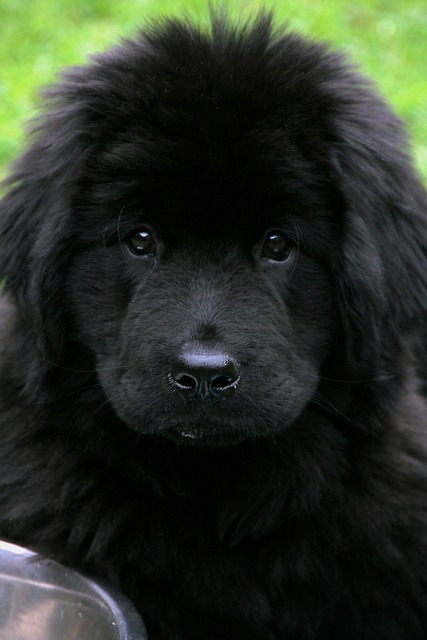
In conclusion, this comprehensive guide to Newfoundland dogs has provided a detailed overview of this gentle and versatile breed. Throughout our exploration, we’ve delved into the history, distinctive characteristics, and essential care considerations that define Newfoundland dogs. Known for their strength, intelligence, and gentle temperament, Newfoundland dogs make exceptional companions for families and individuals seeking a loving and devoted pet. They excel in various roles, including water rescue and therapy work, showcasing their versatility and loyalty. As you embark on your journey with a Newfoundland dog, may you appreciate their unique qualities and form a strong bond with this wonderful breed, creating lasting companionship and joy together.







